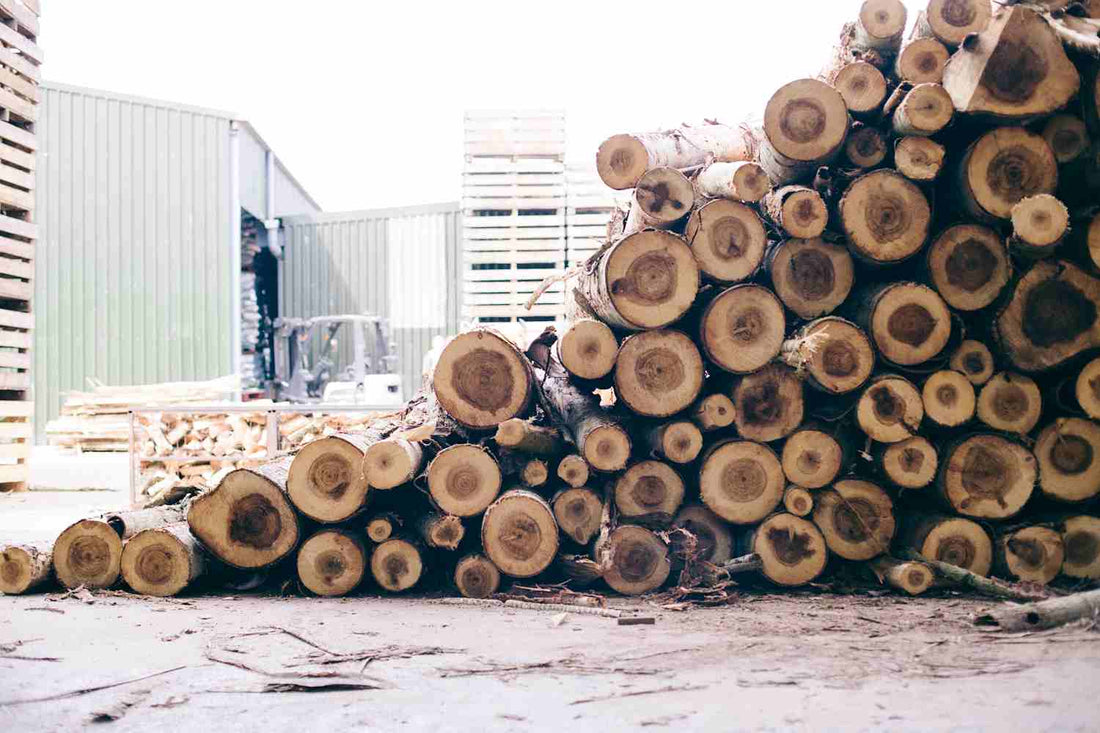
The Firewood Market – What’s happening?
Share
We have now been supplying firewood for over twenty years, starting with barn dried ash firewood, then introducing the kilns to produce kiln dried firewood when Certainly Wood started in 2005.
It has been an interesting journey and a steep learning curve from our humble beginnings of producing just a few hundred tonnes a year of firewood which we were paying about £40/tonne for woodland thinnings.
There were certainly no firewood imports back then, no industry standards, and no kiln drying, and certainly thousands of part-time firewood suppliers across the country. Firewood was something you bought by the tonne or load from your local supplier who tipped it on your driveway, took the cash and drove off. Smokey chimneys across the valley will not have been an uncommon sight and whilst wood burning stoves will have been in abundance, their efficiency would have been around 65% and open fires for many were still the best option. Articles in glossy magazines were all about the wonders of wood burning and everything was positive.
There would certainly not have been any mention of the terms ‘particulate matter’ or PM2.5 or any concerns over wood smoke – for some, there has often been special memories of family gatherings around a campfire when catching the aroma of wood smoke.
Fast forward to 2021 and things have changed in quite a big way:
1. Firewood supply
A huge amount of softwood and woodland thinnings now go into the biomass market in the form of wood chip for boilers. A drive by the government many years ago to encourage a move from fossil fuels such as oil and gas to a more renewable and sustainable fuel. Raw material prices have gone up significantly since we began and firewood timber prices are now around £70-£80 per tonne.

Certainly Wood now produces over 20,000 tonnes per annum, has two large wood fired boilers firing 8 kilns. Many other firewood producers across the country have expanded and run full time businesses supplying across the country. Imports are in abundance from Eastern Europe, mainly Latvia and Lithuania and it is thought that around 100-150,000 tonnes are imported each year. The overall market for firewood in the UK is thought to be in the region of 1.8m tonnes.
With the recent introduction of government legislation in which it is now against the law to sell firewood in volumes below 2m3 that is not dried to below 20% moisture content, many traditional small firewood suppliers are wondering how they are going to comply and some are already packing up and more are likely to follow. Others will grow their businesses to meet demand.
2. Quality standards

With Hetas setting up the Solid Biomass Assurance Scheme well over 12 years ago, a scheme that we helped to develop, standards were starting to be met by the larger firewood suppliers. A standard for moisture content and volume declaration.
In recent years, with the introduction of the Clean Air Strategy in 2019 whereby the government was looking very closely at the sources of air pollution, there was a need to address the issue of wet wood being burnt on domestic appliances. This was seen as a significant contributor to smoke and what is now known as particulate matter and PM2.5 (the finer particles)
In May 2021 it became law that firewood supplied or sold in volumes less than 2m3 had to be approved under the government’s new Ready to Burn assurance scheme run by Hetas. This scheme addresses moisture content only and not the issue of volume or origin. There are now well over 150 firewood suppliers registered under the scheme.
3. Wood burning stoves

The stove industry, under the guise of the Stove Industry Alliance (SIA) has worked hard over the last ten years to meet the challenges set by the EU and the UK government to improve stove efficiency and reduce particulate emissions. Standards have approved significantly with stove efficiencies now over 80% and the industry recently setting up a new certification scheme called clearSkies which meets ever rising standards.
4. The environment

Over the last 4-5 years there has been a real focus on domestic burning and a lot of negative press about the potential impact of wood burning with some pretty hard-hitting headlines suggesting that domestic wood burning accounts for 38% of particulate matter. A figure that even Defra agree is not correct and is more likely to be closer to 12% and this is before the introduction of the new clearSkies certified stoves and the Ready to Burn scheme.
So, the market is changing and is in a period of flux. In terms of domestic wood burning, it is hopefully at a point at which the negativity starts to diminish as the standards rise and the true facts come to the fore in that wood burning is not the big contributor to particulate emissions as initially suggested. It should actually be seen as part of the solution to reduce fossil fuel heating in our homes and increase the use of more renewable and sustainable sources of fuel.
In terms of firewood supplies, the short to medium term suggests good supplies of woodland thinnings and no doubt imports will probably continue to rise. It is thought that the number of firewood suppliers will start to decrease but the remaining suppliers will meet the challenge of kiln drying and increase their size. With this comes improved supply chains, better quality fuel and increased efficiency, but pricing is a difficult one to predict as the pull on biomass for boilers drives up timber prices, as does the challenges of Brexit and Covid 19.
These are challenging times but hopefully in a year's time, the market will be a little easier to predict.
N. Snell July 2021

1 comment
Hi think that was a really useful summary of the situation. We have a wood burning stoves in both our London and Devon homes and things are certainly changing in terms of supply ans if you rlike ’right to burn" because of the particulate issue principally.
In the London home arguably the wood burner is more of a comforter than a heating need – however using it rather than use gas to heat a whole house has it’s place during cold days. In Devon it’s essential to keeping the cottage warm.
In both cases our traditional suppliers of logs have been local businesses where seasoned logs are sold almost as a bi product of their main businesses- the tree surgeon in Kent wo we buy from will I think continue to deliver 2m3 loads although the price will continue to rise.
In Devon a local woodsman sells in small quantities from a flat bed van so around 1m3 at a time and will have to adjust by investing in a kiln to continue to supply after May next year. Again the prices will rise.
In both cases I’ve checked the moisture levels on delivery of the logs and they are below 20%.and obviiosly the level when burning is a lot less as they are stored propoerly often for months before being used.
Your conclusion of watch this space is I’m sure right at a macro level and I’ll do so and keep reading the blog!. At a micro level I’ll have to shop around and see what deals are on offer when the current log stockpiles gets used up this winter.
Jonathan